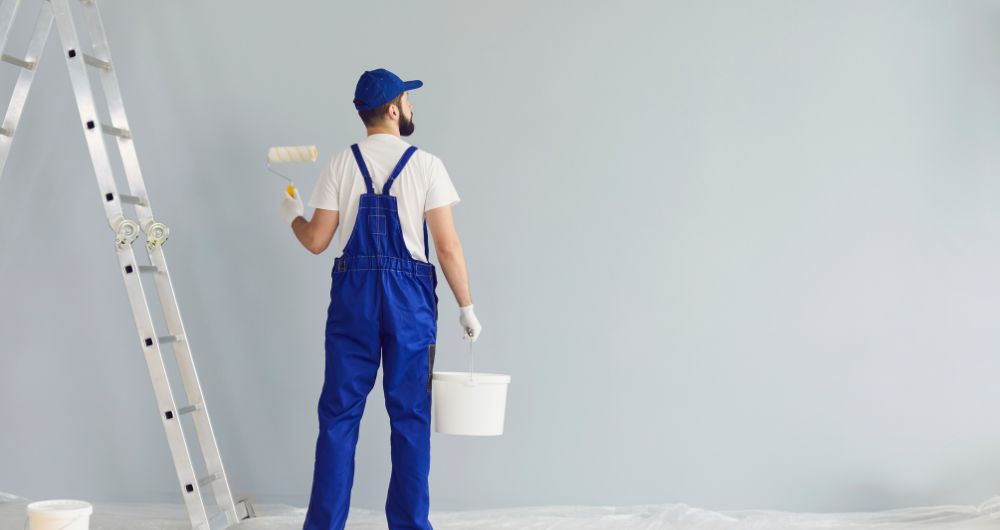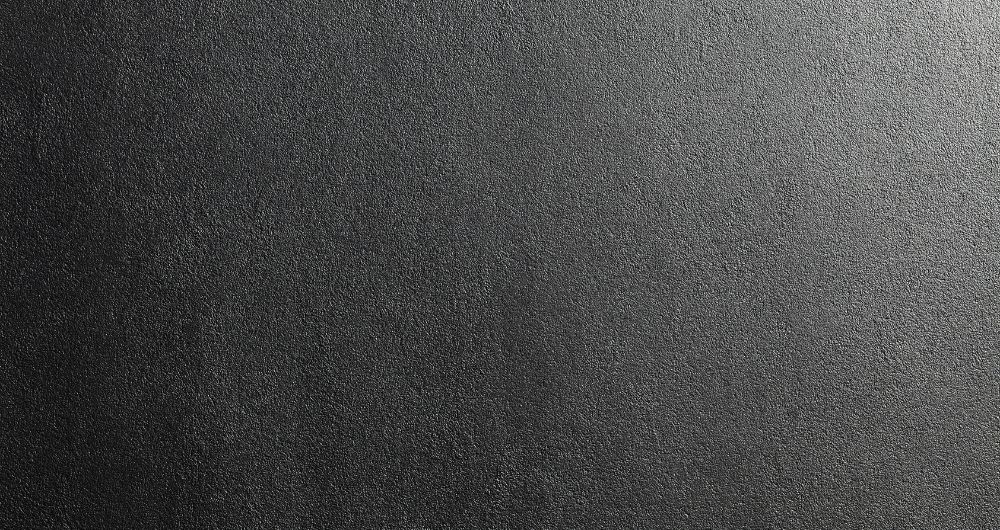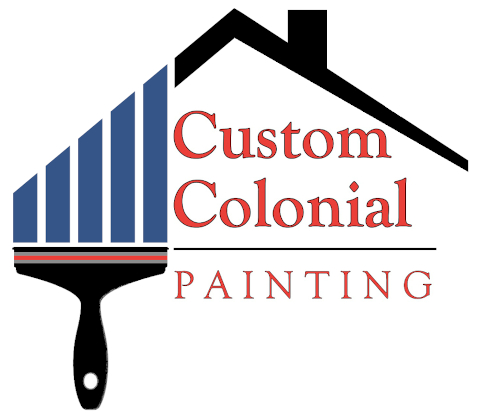When revitalizing your home’s exterior, choosing the perfect paint color is only half the battle. Equally important is selecting the right sheen for your exterior painting project. Sheen not only affects the appearance of your home but also plays a crucial role in its durability and maintenance. From matte to high gloss, each sheen offers unique benefits and considerations. Let’s delve into the various options to help you make an informed decision for your next exterior painting in Durham, CT.
Table of Contents
What Is Paint Sheen?
5 Types of Exterior Paint Sheen
- Flat/Matte
- Eggshell
- Satin
- Semi-Gloss
- High-Gloss
How to Choose the Right Sheen for Your Exterior Painting Project
Frequently Asked Questions
Key Takeaways
|

What Is Paint Sheen?
Paint sheen refers to the level of glossiness or shine that a paint finish exhibits, impacting both the aesthetic appeal and functionality of the painted surface. It ranges from flat or matte, offering no shine, to high-gloss, which is highly reflective. The choice of sheen affects how light is reflected, the durability of the paint, its ability to hide or highlight imperfections, and the ease of cleaning. Understanding paint sheen is crucial for selecting the right paint for different surfaces and applications, ensuring that the final result meets an exterior painting project’s visual and practical requirements.
5 Types of Exterior Painting Sheen
1. Flat/Matte
Flat or matte sheens have long been the preferred choice for interior spaces because they hide imperfections with a non-reflective finish. However, concerns over durability once limited their use in exterior painting. Recent advancements in paint technology have led to the development of more robust flat paints suitable for outdoor use.
With their minimal sheen of up to 12% reflectiveness, these paints absorb light rather than reflect it. This feature makes them an excellent choice for homeowners looking to avoid glare on sunny days. Often referred to as “concealer paints,” their low reflectivity makes them particularly effective at hiding imperfections on rough exterior surfaces such as wood or masonry.
One of the appealing aspects of flat and matte finishes is their contemporary, velvety texture, which adds a sophisticated touch to exterior painting projects. They are also known for their ease of application and the simplicity of touch-ups.
Pros | Cons |
Quick dry time | Least durable |
Absorbs sunlight, reducing glare | Not easy to clean |
Easy to touch up | May not withstand extreme weather |
Forgiving of surface flaws | Can appear lackluster in low-light conditions |
Smooth application | |
Contemporary, velvety finish |

2. Eggshell
This exterior paint is an excellent choice for those seeking a finish that combines the best of both worlds: the understated elegance of a low-luster look with enhanced durability. With a reflective sheen ranging from 12% to 20%, eggshells are adept at masking minor imperfections in siding, making it a good option for surfaces that aren’t perfectly smooth.
Its slightly glossy nature allows for easier cleaning than matte finishes, making it a practical choice for exterior painting projects that aim for both beauty and low maintenance. Eggshell finish is usually cheaper than satin, costing about $2 less per gallon.
Pros | Cons |
Easier to clean than matte finishes | Not as durable as higher gloss finishes |
Forgiving of surface imperfections | Trickier to touch up than flatter sheens |
Suitable for DIY applications | |
Offers greater durability than flat paints | |
Enhances color depth for a more inviting look | |
Provides a soft, warm glow, even in bright sunlight |
3. Satin
Satin finishes are increasingly becoming the preferred choice for exterior painting projects, thanks to their perfect blend of durability, aesthetics, and maintenance ease. These paints are designed with modern, moisture-resistant formulas that meet environmental challenges.
With a reflectiveness level between 25% and 40%, satin offers a middle ground that captures the best of both worlds: it’s shiny enough to deflect harmful UV rays without the intense glare associated with glossier finishes. This makes satin an excellent choice for areas that receive a lot of sunlight, ensuring that your home’s exterior remains vibrant and protected over time.
While satin may not conceal surface imperfections as effectively as matte or eggshell finishes, it still makes minor blemishes less noticeable. Its resilience means less frequent repainting is needed, and its ease of cleaning is a boon for homes exposed to dirt and dust. This sheen is particularly suited for shutters, wood and cement siding, trim, and doors, offering a versatile solution for various exterior painting needs.
Pros | Cons |
Durable, long-lasting finish | Can highlight application flaws, such as lap marks |
Versatile for various exterior surfaces | Requires careful application for a smooth finish |
Offers a subtle, elegant shine | |
Easy to clean, resisting stains and dirt | |
Provides UV protection without excessive glare |

4. Semi-Gloss
Semi-gloss paint is the go-to option for those prioritizing durability and a distinct, refined look for exterior trim, architectural features, and doors. Its sheen level, which lies between 40% and 85%, offers an elegant, luminous finish that enhances the visual appeal of surfaces and facilitates easy cleaning. This makes it particularly suited for areas prone to dirt accumulation and high traffic, where its ability to withstand wear and tear shines.
Despite its many benefits, semi-gloss paint may not be the ideal choice for extensive areas of siding. Its reflective nature highlights imperfections, making every bump and blemish visible. Applying this thicker, often more expensive paint requires precision to avoid lap marks and streaks, which can be challenging over large surfaces. Additionally, its high sheen in direct sunlight can produce a glare that might be too intense for some preferences. However, it undeniably makes a bold statement.
It’s also worth noting that semi-gloss finishes are more commonly found in oil-based paints rather than latex or acrylic varieties. While oil-based paints offer enhanced durability, they are known to emit volatile organic compounds (VOCs). The U.S. Environmental Protection Agency highlights that these compounds can harm human health, pets, and the environment.
Before starting your exterior painting project, check the paint labels and select products labeled as low-VOC or zero-VOC. This decision will benefit your health and the environment and create a beautiful and sustainable living space for years.
Pros | Cons |
Highly durable withstands frequent cleaning | Expensive |
Easy to clean, ideal for high-traffic areas | Tricky to apply |
Stain-resistant, maintaining a pristine appearance | Shows imperfections |
High sheen beautifully accentuates details | Not always environmentally friendly |
5. High-Gloss
High-gloss paint is the most durable option among the various sheens available for exterior painting projects. The allure of high-gloss paint lies in its ability to provide a sleek, reflective surface that brings out the vibrancy and definition in the colors and features of your home.
However, the characteristics that make high-gloss paint so durable and visually striking also contribute to its limitations. With reflectiveness exceeding 85%, it can unforgivingly expose every surface imperfection, making it a less favorable option for larger areas of siding.
Additionally, achieving a smooth, flawless finish with high-gloss paint demands precision and attention to detail, which makes it more costly. This level of reflectivity can also result in a glare that may be overwhelming in certain settings.
Preparation is key when working with high-gloss finishes, as the surface must be meticulously prepared to avoid highlighting blemishes. For those without extensive exterior painting experience, enlisting the services of a professional exterior painter like those from Custom Colonial Painting might be a wise investment to achieve the desired high-quality finish.
Pros | Cons |
Exceptionally durable, ideal for high-wear areas | Higher cost compared to other sheens |
Easy to clean, resisting stains and marks | Accentuates any surface imperfections |
Provides a high-definition finish for details | Requires skilled application to avoid streaks and lap marks |
Can produce a harsh glare in direct sunlight | |
Potentially emits VOCs, posing environmental and health risks |
How to Choose the Right Sheen for Your Exterior Painting Project
Choosing the right sheen for your exterior painting project is crucial for achieving the desired aesthetic and ensuring the longevity of your paint job. Here are tips to guide you through the selection process:
1. Consider the Architectural Style
With their intricate moldings and classic features, traditional homes often look best with matte or eggshell finishes. These lower-sheen options enhance the home’s timeless qualities without creating an unwanted glossy effect that could detract from its historical charm. Conversely, modern or contemporary homes can benefit from the crisp, reflective qualities of semi-gloss or high-gloss finishes, accentuating clean lines and smooth surfaces. Matching the paint sheen to your home’s architectural style ensures that your exterior painting project enhances its unique characteristics.
2. Assess the Surface Condition
High-gloss paints, while durable and easy to clean, can highlight imperfections such as cracks, chips, or uneven textures. If your exterior surfaces have visible flaws, opting for a flat or eggshell sheen for your exterior painting project can help mask these issues, giving your home a more uniform appearance. Before deciding, closely examine your home’s exterior and consider how different sheens might accentuate or conceal existing imperfections.
3. Factor in Maintenance and Durability
High-traffic areas, such as doors, railings, or sections exposed to harsh weather, benefit from higher sheen paints like semi-gloss or high-gloss. These finishes withstand frequent cleaning without losing their luster and offer better protection against moisture and fading. A lower sheen might be adequate for less exposed areas, providing a beautiful exterior painting finish with a simpler maintenance routine.
4. Reflect on the Desired Aesthetic
The chosen sheen largely influences the visual impact of your exterior painting project. High-gloss finishes offer a vibrant, dynamic look, which makes colors appear more saturated and details more pronounced. This can be particularly effective for highlighting architectural features or creating a statement with your front door. On the other hand, lower sheens like matte or eggshell provide a subtle, sophisticated aesthetic. This can be ideal for creating a soft, inviting exterior that blends harmoniously with the surrounding landscape.
5. Understand the Impact of Light
Lighting conditions that can dramatically affect the appearance of paint sheens on your home’s exterior. Glossy finishes reflect a lot of light, which can enhance the brightness of shaded areas but may create excessive glare in sunny spots. Before finalizing your sheen choice, observe how different sheens react to the natural light around your home at various times of the day. This will help you select a sheen that complements your home’s exposure to light and ensures it looks its best under all conditions.
6. Consider Longevity and Repainting
The frequency of repainting is an important consideration, influenced by the chosen paint sheen. Matte and flat finishes, while elegant, may show signs of wear more quickly and could require more frequent touch-ups or repainting. In contrast, higher sheen levels like satin or semi-gloss are more resilient and tend to maintain their appearance longer, which can reduce the need for future exterior painting projects. Weigh the initial aesthetic appeal against the long-term maintenance requirements to make a cost-effective and practical sheen choice.
7. Consult with Professionals
Exterior painting experts like Custom Colonial Painting can offer tailored recommendations based on their experience with different sheens in various environments and architectural styles. They can assess your home’s specific conditions, including climate, exposure to sunlight, and architectural details, to suggest the most suitable sheen options. This professional insight can ensure that your exterior painting project achieves both your aesthetic goals and durability requirements.
Frequently Asked Questions
What is the best time of year to undertake an exterior painting project?
The ideal time for exterior painting largely depends on your local climate. Generally, it’s best to paint in mild weather conditions—typically in late spring, summer, or early fall—when there’s little rain and temperatures are not too high or too low. This ensures that the paint dries evenly and adheres properly to the surface. Avoid painting in extreme heat or direct sunlight, as this can cause the paint to dry too quickly, leading to imperfections.
Can exterior paint be used on interior surfaces?
While exterior paint is formulated to withstand the elements, using it indoors is not recommended. Exterior paints may contain chemicals and additives designed for outdoor durability that can be harmful in enclosed spaces due to poor ventilation. Interior paints are specifically formulated to be safer for indoor air quality and to provide a finish suited for interior lighting conditions. For interior painting projects, use the appropriate types of paint and finishes.
How long does exterior paint last?
The lifespan of exterior paint varies depending on several factors, including the quality of the paint, the preparation of the surface, the exterior painting technique, and the climate. Generally, a high-quality exterior paint job can last 5 to 10 years. Higher sheen paints like semi-gloss and high-gloss may offer longer durability than matte or flat sheens. Regular maintenance can also help extend the life of exterior paint. You may also consider regular retouches once a year if your exterior paint gets minor damage like wear and tear. Schedule updates with a professional home painter so they can assess whether you need minor work or a full repaint project.
Is it necessary to prime before painting the exterior?
Priming is essential in most exterior painting projects, especially if you’re working with bare wood or sheet metal, or if the previous paint is peeling or significantly faded. A primer helps provide a uniform surface for the paint to adhere, enhancing the paint’s durability and appearance. However, some modern paints come with a primer, which can be suitable for certain surfaces and conditions.
How can I ensure my paint color looks the same outdoors as on the sample?
Lighting plays a significant role in how paint colors appear. To ensure the color looks the same on your exterior as on the sample, paint a large swatch on the exterior surface and observe it at different times. This will give you a realistic idea of how the color interacts with natural light and the surroundings, helping you make a final decision confidently.
Elevate Your Home’s Exterior with Custom Colonial Painting
Choosing the right sheen for your exterior painting project is a critical decision that affects not only the look of your home but also its maintenance and longevity. Working with experienced professionals like Custom Colonial Painting can help ensure that you make the best choice for your home, resulting in a beautiful and lasting exterior paint job.
Contact us today to transform your home with expertise and care.



